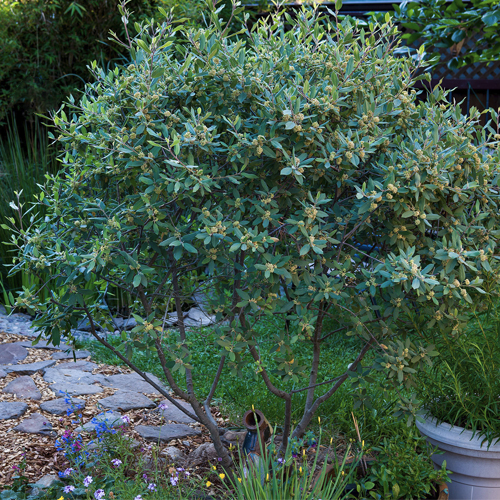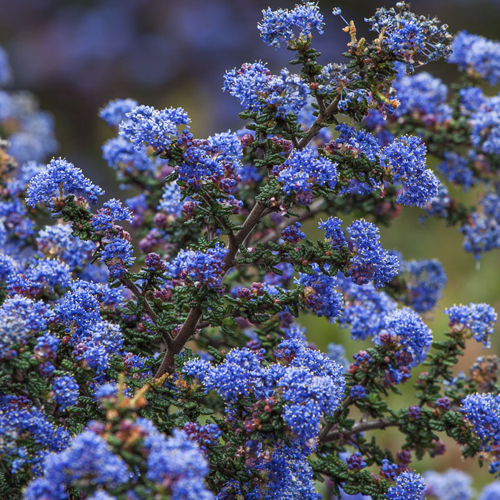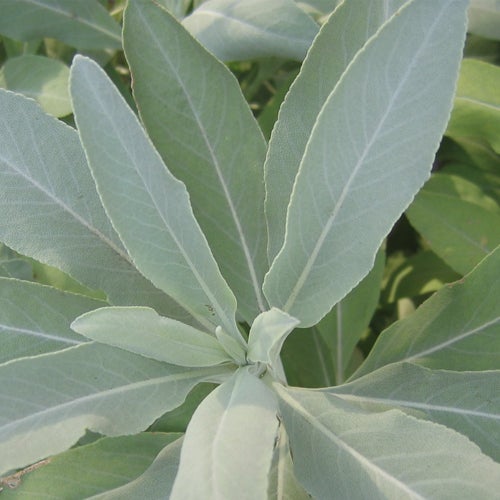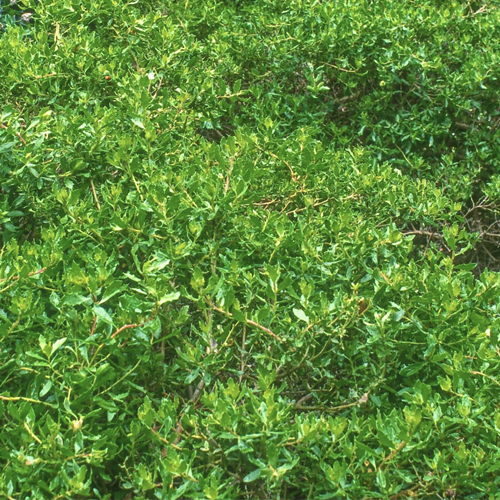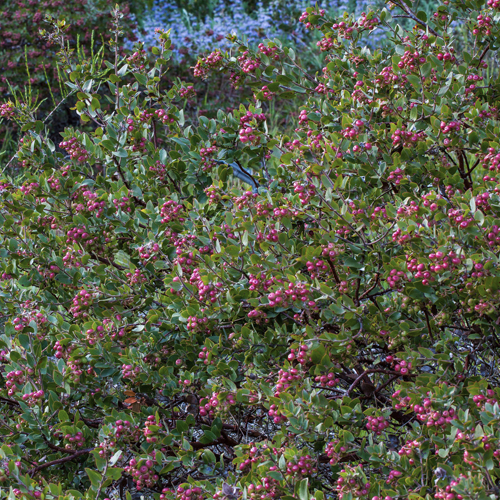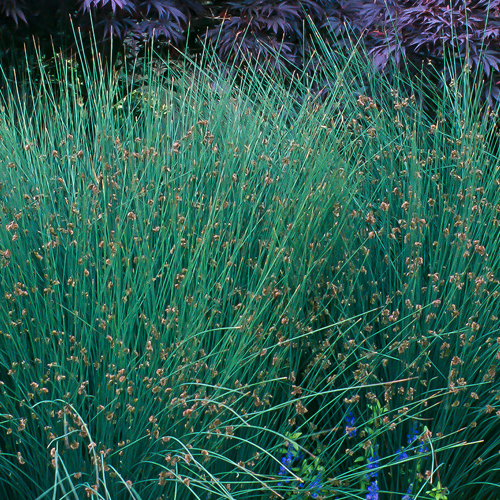Native Haven
BACK TO FULL TOUR
Garden Features
Drought Tolerant
California Natives
Deer Resistant
Drip Irrigation
Pesticide Free
Wildlife Habitat
Partner: California Native Plant Society - Milo Baker Chapter
Six years ago, we purchased our home, where the front and back yards were originally covered in lawn, which we removed in favor of a more sustainable design. Five mature red maples and two smaller crepe myrtles were taken out of the backyard, and the front yard was regraded and transformed into a faux stream with manzanitas and other native plants. The backyard was similarly redesigned, incorporating hills and pebbled trails while retaining four mature Japanese maples for their beauty and shade. Nearly all of the plants are native to California, chosen for their low water use and drought tolerance. Manzanitas, known for their toughness and ease of care, were a key addition. Initially, drip irrigation ensured the plants established well, but after two years, most plants required little to no watering beyond occasional deep watering. Over time, the landscape evolved with plantings being replaced or relocated as needed, resulting in a vibrant mix of mature and younger plants. Our decision to embrace a native landscape was inspired by our appreciation for nearby parks like Foothill and Shiloh, where we find peace and serenity in nature. Unlike lawns, which are biological deserts, our garden attracts a variety of wildlife, from skinks and lizards to butterflies, birds, and bees. It’s a living, thriving space that deepens our connection to the natural world. Furthermore, the garden’s low water consumption is a significant advantage in a state facing ongoing droughts. We’re proud of what we’ve created and excited to share it with others, making the Eco-Friendly Garden Tour the perfect opportunity to do so.
Special Events

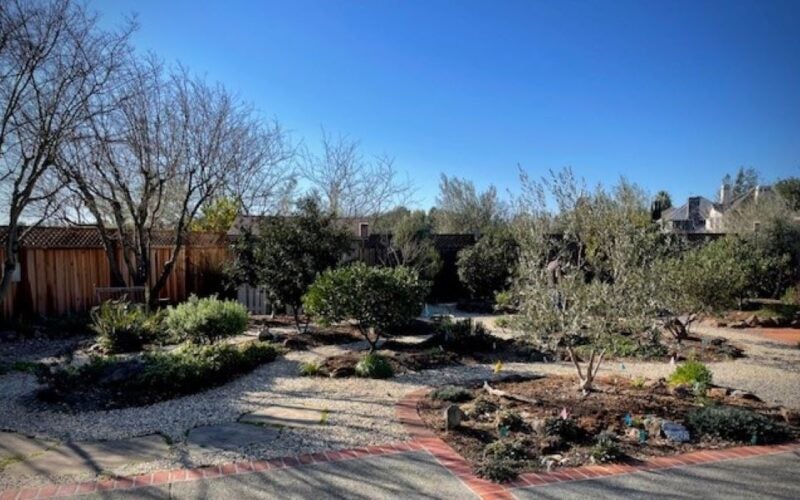
Plants in this Garden
Favorite Plants
CA Fuchsia
CA Buckwheat
CA Poppy
Coyote Mint
Manzanita
Favorite Garden Suppliers
Cal Flora Nursery
2990 Somers Street Fulton
Emerisa Gardens
555 Irwin Lane Santa Rosa
Urban Tree Farm
3010 Fulton Road Fulton
Recommended Resources
Gardening Tips
Set aside a “wild” area.
an unkept part of the garden, for the critters; snakes, lizards, etc.…a place they can call home.
Plant insect and bird friendly plants
a habitat garden is more fun.
